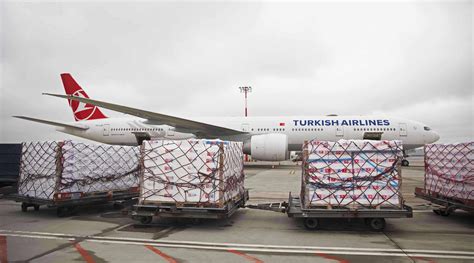Welcome to our comprehensive overview of Turkey’s import and export data for the pivotal year of 2022. In a world deeply interconnected by global trade, understanding the intricacies of a nation’s commerce is crucial for businesses and investors alike. As we delve into the heart of the data, we’ll uncover insights and patterns in Turkey’s trade landscape. From scrutinizing the defining import trends that shaped the year to exploring the vigorous markets that fervently consumed Turkish exports, we endeavor to present a clear picture of the economic interplay at work. Additionally, we’ll consider the diverse economic factors that influenced Turkey’s trade and contemplate the potential trajectories for its import and export sectors. Join us as we dissect the figures, analyze the markets, and forecast what the future may hold for Turkey’s international trade activities.
Titles
Understanding Turkey’s Import and Export Data
In the grand tapestry of global trade, Turkey’s import and export data provide critical insight into the country’s economic pulse. Recognizing the intricate balance of trade flows involves delving into Turkey’s position as a nexus for Eurasian commerce, where the interplay between its diverse import needs and its strengths in exporting various goods knits a complex pattern of economic relationships. As historians meticulously unravel ancient scrolls, analysts similarly pour over Turkey’s trade records to decode the story of its evolving marketplace.
The robust pillars of Turkey’s economy are often mirrored in the varieties of goods it imports. Analyzing data over the years reveals a sustained increase in raw materials and intermediate goods necessary to bolster its manufacturing sector – a testament to the country’s strategic push towards industrialization and value-added production. As a bustling bridge straddling the continents of Asia and Europe, Turkey’s demand for energy, technological components, and machinery illustrates the continuous quest for modernization and the nation’s commitment to keeping pace with the global march towards advancement.
Concurrently, Turkey’s export landscape paints a picture of a nation leveraging its geographical advantages and productive capacities. Distinct patterns emerge from the datasets, highlighting significant growth in sectors such as automotive, textiles, and agriculture. A more granular look at Turkey’s export markets unveils an extensive tapestry where the threads of commerce extend and intertwine with countries all over the globe, allowing Turkey’s economy to knit stronger ties with established trade partners while embroidering new connections with emerging market entrants.
Deciphering this wealth of import and export statistics involves understanding not only the what and the where but also the how and the why. Currency fluctuations, geopolitical events, and global market trends all cast their shadows upon Turkey’s trading activities. Thus, the diligent examination of Turkey’s import and export data becomes a continual pursuit, providing the foresight to navigate a course through the ever-shifting sands of international commerce, and equipping stakeholders with information crucial for driving sustainable economic growth.
Analyzing Turkey’s Import Trends in 2022
Diving into the intricacies of Turkey’s import trends in 2022, it becomes evident that the nation has exhibited a remarkable ecosystem of diverse economic activities, as the global markets have been reshaping their contours post-pandemic. It is of paramount importance to scrutinize the composite structure of the imports that are transiting through Turkish borders, signaling the rebirth of industrial vigor and the amplification of consumer demand across a myriad of sectors, which in turn, underscores the shift in market dynamics and the availability of products indigenous to myriad corners of the globe.
Throughout the year 2022, there was a significant inclination towards the enhancement of technological apparatus within Turkey, which was vividly reflected in the surge of imports within the technological sphere, predominantly seen in the automotive and machinery sectors. The accumulation of high-tech commodities not only represents a strategic move for Turkey’s long-term economic blueprint but also an adaptation to the technological zeitgeist that has been cascading over the shores of various nations. This heightened acquisition of technology emphasizes Turkey’s assiduous quest to satiate the thirst for modernization and infrastructural prowess.
Furthermore, with a lens focused on the landscape of agricultural and consumable goods, there has been an unwavering momentum observed in the import patterns that Turkey has navigated through. The procurement of staple commodities such as grains, edible oils, and cotton play a pivotal role in sustaining the population’s basic needs and fueling the textile industry. This import trend offers a kaleidoscopic view into the socio-economic channels that interlace with Turkey’s foundational trade policies, revealing a country deeply aware of its necessities, in constant pursuit of maintaining a well-balanced and nutritive influx of products, which is emblematic of its commitment to social stability and growth.
On an economic tableau, the analysis of Turkey’s 2022 import trends is incomplete without the mention of energy imports. The propulsive need for energy, pervasive in each crevice of Turkey’s expanding economy, has been addressed with an ever-increasing volume of imported fossil fuels, alongside renewable energy equipment. As Turkey strives to address the burgeoning demand for electric power and simultaneously transition to more sustainable alternatives, this trajectory of energy imports mirrors the nation’s resolute stance towards energizing its future endeavors and ensuring that the spark of progress continues to illuminate the path of its economic evolution.
Examining Turkey’s Key Export Markets
When delving into the nuances of Turkey’s export markets, one must give due consideration to the diverse range of products that traverse its borders. A critical dimension of this analysis lies in identifying the key destinations that consistently appear in Turkey’s export logs. Situated at the crossroads of Europe and Asia, Turkey has leveraged its strategic position to forge robust trade relationships with countries on both continents, creating a multi-faceted export profile that caters to a wide array of global demands.
Among the nation’s paramount export markets, Germany stands tall, consistently emerging as a top destination for Turkish goods. This long-standing partnership is underpinned by a mutual interest in textiles, automotive products, and electronics. Moreover, the intricate economic ties between Turkey and Germany are further reinforced by the substantial Turkish diaspora resident in Germany, which contributes to the economic synergy experienced by the two nations. The depth of this relationship indicates the importance of cultural and historical ties in solidifying the bonds between key trade partners.
Even as Germany represents a cornerstone of Turkey’s export activities, the country has also seen burgeoning trade volumes in regions such as the Middle East and North Africa (MENA). Notably, Iraq and the United Arab Emirates have surfaced as significant buyers of Turkish exports, which include not only commodities like precious metals and stones but also an array of consumer goods, construction materials, and food products. The enhancement of these export markets underscores Turkey’s ability to navigate and capitalize on regional economic fluctuations and the shifting landscape of global trade milieus.
Looking further afield, the United States features prominently as a pivotal export market for Turkey. Thriving on a comprehensive set of exported goods that encapsulates machinery, vehicles, and iron and steel products, this transatlantic exchange is a testament to Turkey’s competitive edge in industries that cater to more developed economies. Recognizing the value of expanding into diverse markets, Turkey’s strategic endeavors are aimed at maintaining existing trade alliances while exploring new opportunities, thereby securing its place on the global stage as an export powerhouse.
The Impact of Economic Factors on Turkey’s Import-Export
The economy of Turkey is a complex tapestry woven with various economic factors that shape the dynamics of its import and export activities. Influences such as fluctuations in global commodity prices, changes in foreign exchange rates, and alterations in the socio-political landscape are significant shapers of Turkey’s external trade. Specifically, the strength of the Turkish Lira can either encourage or discourage international trade partners, thereby impacting the import-export balance substantively.
Analyzing the impact of inflation reveals a two-fold narrative where on the one hand, domestic inflation can enhance export competitiveness, but on the other, it can also increase the cost of imported goods, thus affecting the purchasing power inside Turkey. These nuanced shifts in economic health directly interface with the country’s balance of trade and resonate through the national revenue streams that are so vital to Turkey’s economic stability and growth.
In the realm of policy-making, government strategies and fiscal policies play a pivotal role in steering the import-export trajectory of the nation. Whether it’s through incentives for exporters or through tariffs and quotas on imports, these decisions resonate deeply within the trade sectors. Moreover, Turkey’s geopolitical position as a bridge between East and West bestows upon it both challenges and opportunities that are continuously redefined by evolving relations with neighboring countries and its standing within international trade agreements.
As we look towards the future, predicting the trends of Turkey’s import and export will require a vigilant eye on these myriad economic factors. The integration of new technologies, the potential for shifts in global trade regulations post-pandemic, and Turkey’s own socio-economic reforms will all be integral in shaping the nation’s prospects in international markets. It becomes evident that understanding the economic pulse is crucial for stakeholders within the trade ecosystem seeking to navigate the uncertain waters of global commerce with resilience and strategic foresight.
Predicting Future Import-Export Opportunities in Turkey
As we gaze into the horizon of Turkey’s economic landscape, it becomes crucial to examine the predictive indicators that signal emerging import-export opportunities. The intricate tapestry of geopolitical relations, advances in technology, and shifts in consumer preferences all play a pivotal role in shaping the future of Turkey’s trade dynamics. In-depth analyses and astute forecasting can unveil lucrative avenues for businesses seeking to capitalize on these evolving patterns. Understanding these underlying trends is paramount for players within the international trade ecosystem to strategize and adapt accordingly.
Given Turkey’s strategic position straddling both Europe and Asia, its potential to serve as a pivotal hub in global trade networks is immense. Enhanced economic cooperation agreements, infrastructural developments such as the ambitious Istanbul canal project, and Turkey’s growing digital commerce sector are expected to amplify the country’s import-export capacity. Furthermore, Turkey’s commitment to sustainable energy and its burgeoning renewable resources sector stand as compelling indicators of future export growth areas that could reshape its economic landscape and global trade contributions.
The evolving landscape of global trade, influenced by factors such as protectionist policies and regional trade agreements, necessitates that Turkey adapt and seek new trade partnerships. As such, forecasting models that incorporate these variables are indispensable for anticipating the shifts in Turkey’s export destinations and import sources. By leveraging cutting-edge data analytics and scenario planning techniques, stakeholders can gain a competitive edge in identifying nascent markets and sectors with high growth potential. Such foresight is instrumental in formulating robust, forward-looking trade policies and business strategies.
Finally, acknowledging the impacts of socio-economic transformations on consumer behaviors is key to predicting future trade opportunities. The rise of an affluent middle class is projected to drive demand for imported luxury goods and high-quality consumer products. Concurrently, Turkey’s export portfolio may expand to include innovative technologies and value-added services, adapting to the global shift towards knowledge-intensive economies. Thus, aligning business ventures with these prognostic insights remains essential for tapping into Turkey’s burgeoning import-export channels and solidifying one’s position in the global marketplace.






